Refrigerators are essential for keeping food fresh and safe for consumption. But, in a home with young children, you may want to take extra precautions to ensure that curious hands don’t open the refrigerator and put themselves in danger. Fortunately, locking the refrigerator isn’t difficult. Here’s what you need to know about how to lock a refrigerator.
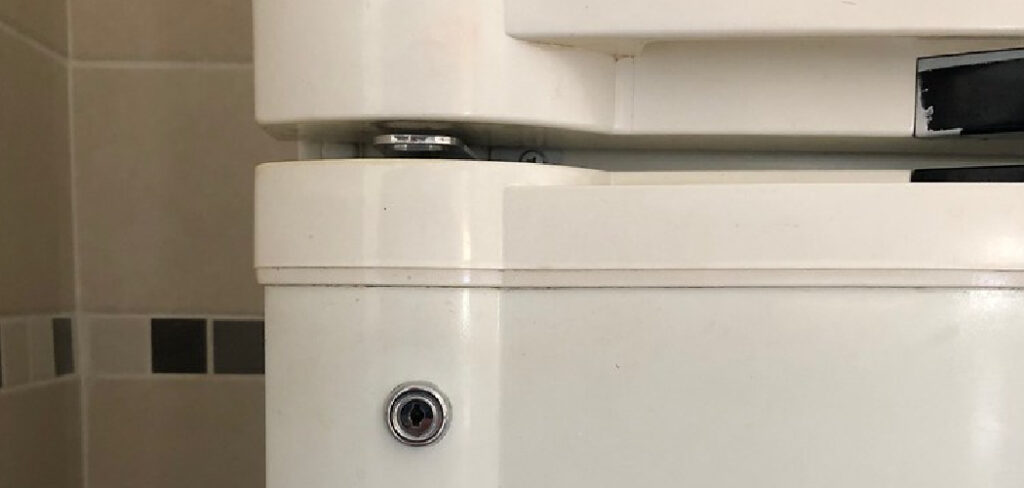
Can You Lock a Refrigerator?
Keeping a refrigerator securely locked can be a great idea in situations like an office break room to ensure no one is eating or drinking snacks left behind by others or in a college dormitory where roommates sharing the same kitchen might bicker over who finished the last of the milk.
Fortunately, almost any modern refrigerator can be locked with either a padlock or another locking device. In addition, depending on the size and model of the fridge you’re trying to secure; special latching mechanisms can easily be installed and keep your food items safe from prying hands.
Make sure you don’t forget where you put the key; otherwise, you might need to resort to more drastic measures if the contents become inaccessible!
Why Should You Lock a Refrigerator?
Refrigerators are essential to any kitchen, but it is easy to forget why they should be locked. Refrigerators may contain hazardous items like toxic cleaning supplies, and locking them will prevent curious children from gaining access.
Additionally, it can help keep food sanitation in check by preventing others who do not belong or don’t understand proper food handling techniques from entering.
Moreover, locking the refrigerator can ensure that everyone gets their fair share of available food supplies if you have roommates or a large family. Taking the time to lock your refrigerator is a great way to ensure the safety and security of your home while keeping everyone happy and well-fed!
7 Tips to Follow on How to Lock a Refrigerator
1. Types of Refrigerator Locks
There are several different types of locks available for refrigerators. Magnetic locks attach to the top or side of the refrigerator door and require a magnetic key to unlock them.
These are great because they are easy to install and remove if needed, but they may not be strong enough on their own if you have particularly strong children.
Lever locks, on the other hand, attach directly to the handle of your fridge and require a key or code combination to unlock them. These are more secure than magnetic locks but can be harder for adults who have forgotten their code to open as well!
2. Installing a Refrigerator Lock
To install either type of lock, you’ll need some basic tools such as a screwdriver or drill (depending on your type of lock). Follow the instructions with your lock carefully, so it is installed correctly and securely.
Once your lock is installed, you can set the combination or use the provided key and test it out – it should be secure enough so that no one can open it without unlocking it first!
3. Tips for Using a Refrigerator Lock
When using a refrigerator lock, there are several things you should keep in mind: always store the key or combination securely so that no one else can access it; be aware of who has access to the code; and make sure that any adults living in your home also know how to unlock it in case of an emergency.
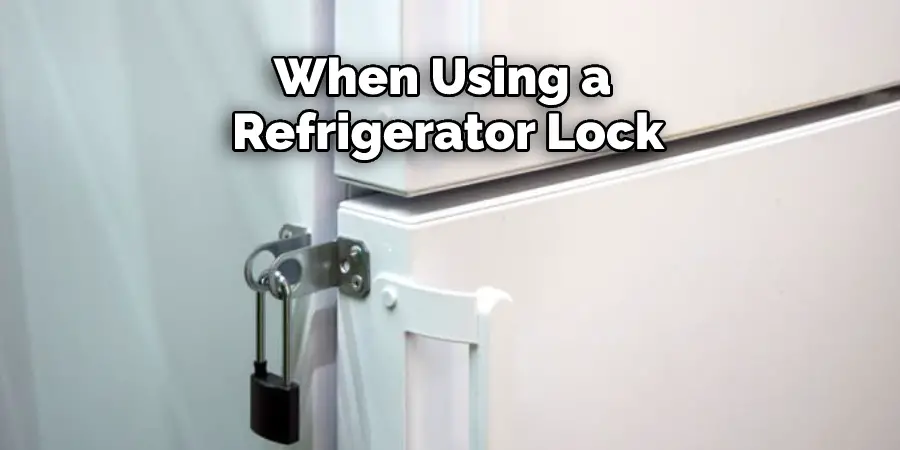
Additionally, always supervise children when they’re near the refrigerator; even if you have locked it securely, curious hands could still find their way inside!
4. Locking and Unblocking the Refrigerator
When you want to lock your refrigerator, ensure that all doors are securely closed before you activate the lock. Once the locks are engaged, no one should be able to open them without first unlocking them.
When you want to unblock the refrigerator, ensure all the doors are open before unlocking it. This will ensure that no one can accidentally lock themselves inside the fridge!
5. Choosing a Refrigerator Lock
The type of lock you choose for your refrigerator should be based on how secure you need it to be. For example, magnetic locks may not be suitable for very strong children, so you might want to opt for a lever lock instead.
Additionally, how difficult or easy you want the code (or key) to be should also factor into your decision – if you have a large family, you’ll want something that everyone can remember!
6. Adding an Extra Layer of Security
If you are worried about your children or other people trying to access your refrigerator, consider adding an extra layer of security by installing a motion-sensor alarm near the fridge.
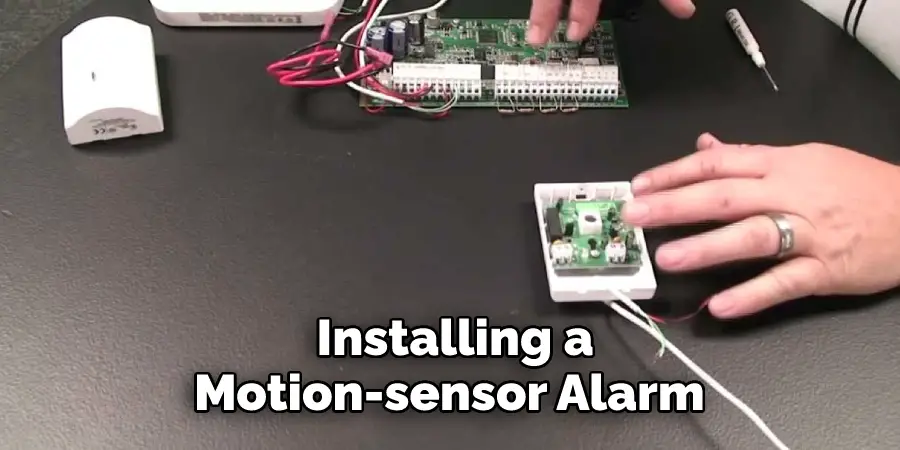
This will alert you if anyone attempts to open it without permission and can serve as a deterrent for those who might be thinking of accessing your food without permission.
7. Adjusting the Temperature
Finally, remember that locking your refrigerator does not mean you should ignore temperature adjustments. Most refrigerators should be kept at a temperature between 37 and 40 degrees Fahrenheit. Make sure to check the thermostat periodically and adjust it as necessary so that items stored inside the fridge stay fresh and safe.
That’s it! You’ve now learned how to lock and how to lock a refrigerator. By following these steps, you can keep your food safe and secure while allowing those in your home access when needed. In addition, with a good lock in place, you can rest assured that no one can get inside without permission!
Tips and Instruction on How to Create a Diy Locking Solution for Refrigerators
Here are some tips and instructions on how to create a DIY locking solution for your refrigerator:
- Simple Lock Mechanism: One of the easiest and most effective ways to lock your refrigerator is by using a simple lock mechanism. You can use a cable tie or a zip tie to secure the door handles together. Wrap the tie around both handles and tighten it until the handles are firmly secured together. Cut off the excess part of the tie, and you have a simple, cost-effective lock for your refrigerator.
- Hasp and Padlock: Another DIY solution is to attach a hasp and padlock to your refrigerator door. A hasp is a metal plate that is screwed into the door and frame of the refrigerator. You can attach the padlock to the hasp to lock and secure the door. This solution requires a bit more work and tools, but it provides a more secure and durable locking mechanism.
- Combination Lock: You can also create a combination lock for your refrigerator using a few simple materials. You will need a combination lock, a metal plate, and a few screws. Attach the metal plate to the door of the refrigerator using the screws. Then, attach the combination lock to the plate. Set your own combination, and you now have a secure and personalized lock for your refrigerator.
- Cabinet Latch: If you prefer a more discreet locking solution, you can use a cabinet latch. A cabinet latch is a small device that is attached to the door and frame of the refrigerator. It is often used in kitchen cabinets to keep them closed. You can use this device to keep your refrigerator door securely closed and locked. This solution is easy to install and does not require any special tools or skills.
Remember to choose a solution that is appropriate for your refrigerator model and your security needs. Also, make sure to follow the instructions carefully and take all necessary safety precautions when installing any DIY locking solution.
How to Maintain Refrigerator Locker for Long-Term Use
Once you have installed the desired locking solution for your refrigerator, it is important to maintain it properly for long-term use. Here are some tips and tricks on how to maintain your DIY refrigerator lock:
1. Clean the Locking Device Regularly:
Dust and dirt can accumulate on the surface of your refrigerator lock, which could slow down its functioning or cause it to jam up. Make sure you clean it with a damp cloth at least twice a month.
2. Inspect the Lock and Key Regularly:
Regular inspection of your refrigerator locker is essential to ensure that it is still in good working order. Make sure you check for any signs of wear and tear, such as rust or dents. If there are any issues, replace the lock immediately.
3. Change the Combination Occasionally:
If you are using a combination lock for your refrigerator, it is important to change the combination periodically. This could help prevent unauthorized access and helps keep your contents safe from potential theft or vandalism.
4. Lubricate the Lock and Key:
To prolong its lifespan and maintain its smooth functioning, lubricate your refrigerator locker with a light silicon-based lubricant at least once every six months. This will help in ensuring that the lock and key do not become stuck or rusty over time.
5. Replace Damaged or Broken Locks:
If your refrigerator lock is damaged, broken, or malfunctioning, it should be replaced as soon as possible. This will help protect the contents of your refrigerator and prevent any potential theft or unauthorized access.
6. Use Quality Locks and Keys:
Always use a quality lock that is designed to withstand extreme temperatures and humidity levels. This will help prevent your lock from becoming damaged or malfunctioning over time. Make sure to also invest in high-quality keys that are durable and reliable.
7. Store the Key Securely:
Make sure to store your key securely and out of sight. If possible, try keeping it in a safe place that is away from any potential intruders or burglars.
8. Perform Regular Maintenance:
Performing regular maintenance on your refrigerator locker is essential for its long-term functionality. This should include checking the lock and key regularly, lubricating it periodically, changing the combination occasionally, and replacing any damaged or malfunctioning parts immediately.
Following these simple tips will help you maintain your refrigerator locker for long-term use. By taking the time to properly maintain your locker, you can ensure that it stays in perfect working condition and helps protect the contents of your refrigerator for years to come.
Things You Need to Know Before Locking a Refrigerator
If you’re planning to lock a refrigerator, you should know a few things. First, consider what items may be in the refrigerator that is perishable, so those need to be removed before locking.
Second, understand why the refrigerator needs to be locked in the first place. Is it for safety reasons or to prevent guests from raiding it? Third, ensure any food that needs to be cooked is taken out of the refrigerator and cooked properly as soon as possible.
Lastly, if small children will have access to the fridge, remember they could potentially become trapped inside if it is not adequately secured and supervised. Knowing this information can help you make an informed decision about whether a locked refrigerator is necessary.
Benefits of Locking a Refrigerator
Keeping a refrigerator locked ensures that food stored inside remains safe and secure. Doing so is especially important in households with children or pets, where food may be easily accessed and spoiled due to lack of supervision.
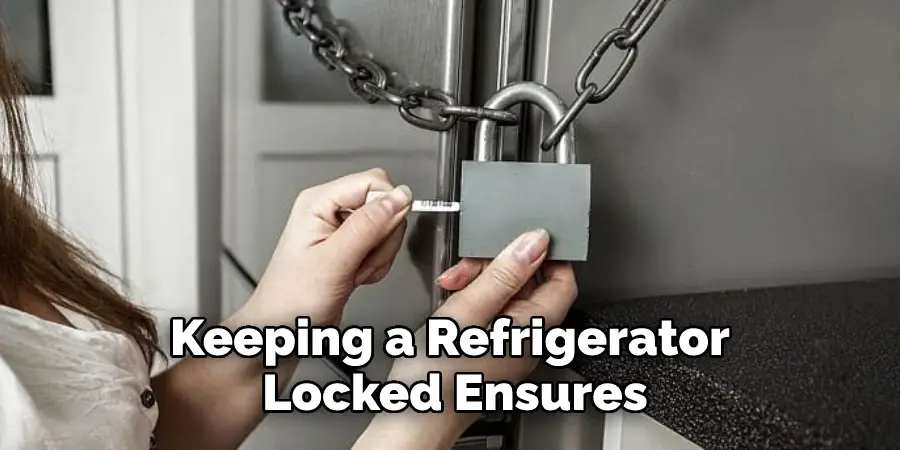
Locking a refrigerator also encourages better organization since items are less likely to get hidden at the back of the fridge behind older leftovers. Even elderly family members living alone can benefit from a locked fridge, as they won’t have to double-check whether the door is shut before leaving home.
In general, the practice of locking a refrigerator reinforces responsible habits that are beneficial for all members of the household.
Disadvantages of Locking a Refrigerator
Locking a refrigerator may seem attractive, but it also has many drawbacks. One of the primary disadvantages is that access to healthy foods can be restricted. Despite precautions such as labeling food with expiration dates, snacks may pile up in the refrigerator without being discovered or consumed quickly enough.
Young children may attempt to access food without permission and not know how to unlock the appliance. This could lead to an emergency if they become trapped inside or cause property damage while attempting to break into the refrigerator.
Additionally, if you need quick access to food while entertaining, pausing and unlocking the refrigerator every time can be a significant hassle. And finally, someone with mobility issues or strength limitations may have difficulty opening it, creating another barrier for them to access their meals.
6 Common Mistakes People Make When Trying to Locking a Refrigerator
1. Not Leveling the Refrigerator
One of the most common mistakes people make when trying to lock a refrigerator is not leveling it. The refrigerator needs to be level for the locking mechanism to work properly. If the refrigerator is not level, the locking mechanism will not engage, and the door will not be able to close properly.
2. Not Closing the Door All the Way
Another common mistake is not closing the door all the way. The door needs to be closed all the way for the locking mechanism to engage. If the door is not closed all the way, the locking mechanism will not engage, and the door will not be able to close properly.
3. Not Engaging the Locking Mechanism
Another mistake is not engaging the locking mechanism. The locking mechanism must be engaged for the door to close properly. If the locking mechanism is not engaged, the door will not be able to close properly.
4. Not Using Both Hands
The refrigerator must be held with both hands for the locking mechanism to work properly. If only one hand is used, the refrigerator will not be level, and the locking mechanism will not engage correctly.
5. Trying to Lock from the Outside
The locking mechanism can only be engaged from inside the refrigerator. If someone tries to lock a refrigerator from the outside, they will not be able to close it correctly and may damage both the fridge and themselves in the attempt.
6. Forcing It to Shut
The last common mistake people make when trying to lock a fridge is forcing it to shut instead of letting it close on its own. The door has a spring-loaded hinge that allows it to close slowly on its own without being forced shut. If someone tries to force it shut, they may damage both.
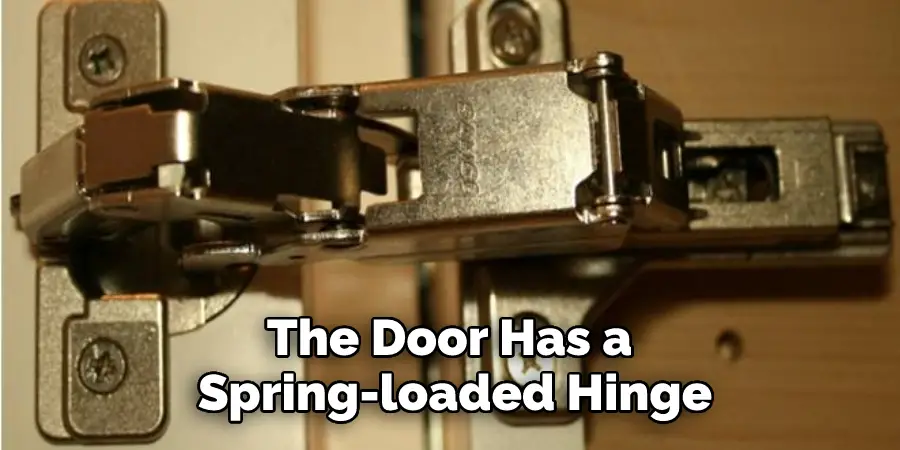
Frequently Asked Questions
Q: Can I use a combination code instead of a key to lock the fridge?
A: While some padlocks are specifically designed to use a combination of numbers, most standard models require a key. However, if you have one requiring a code, it’s relatively easy to open without the key.
There are several ways you can open the round padlock without the key for instance, you can use a lock pick, bump key or combination cracker.
Q: Are magnetic, electronic, or digital locks better than traditional padlocks for securing refrigerators and freezers?
A: It depends on your needs. Magnetic locks are typically more reliable than traditional padlocks, as they’re harder to tamper with and can’t be picked open. Electronic or digital locks are a good choice if you need to provide access to multiple people, as you can program different codes for each person.
Conclusion
Securing your refrigerator is important to ensure safety in your home with young children. With just a few simple steps—and maybe some additional supervision—you can easily install and use a secure refrigerator lock so that everyone stays safe while enjoying delicious food at home!
Knowing how to lock a refrigerator will help ensure peace of mind even when curious minds wander into dangerous territory.
